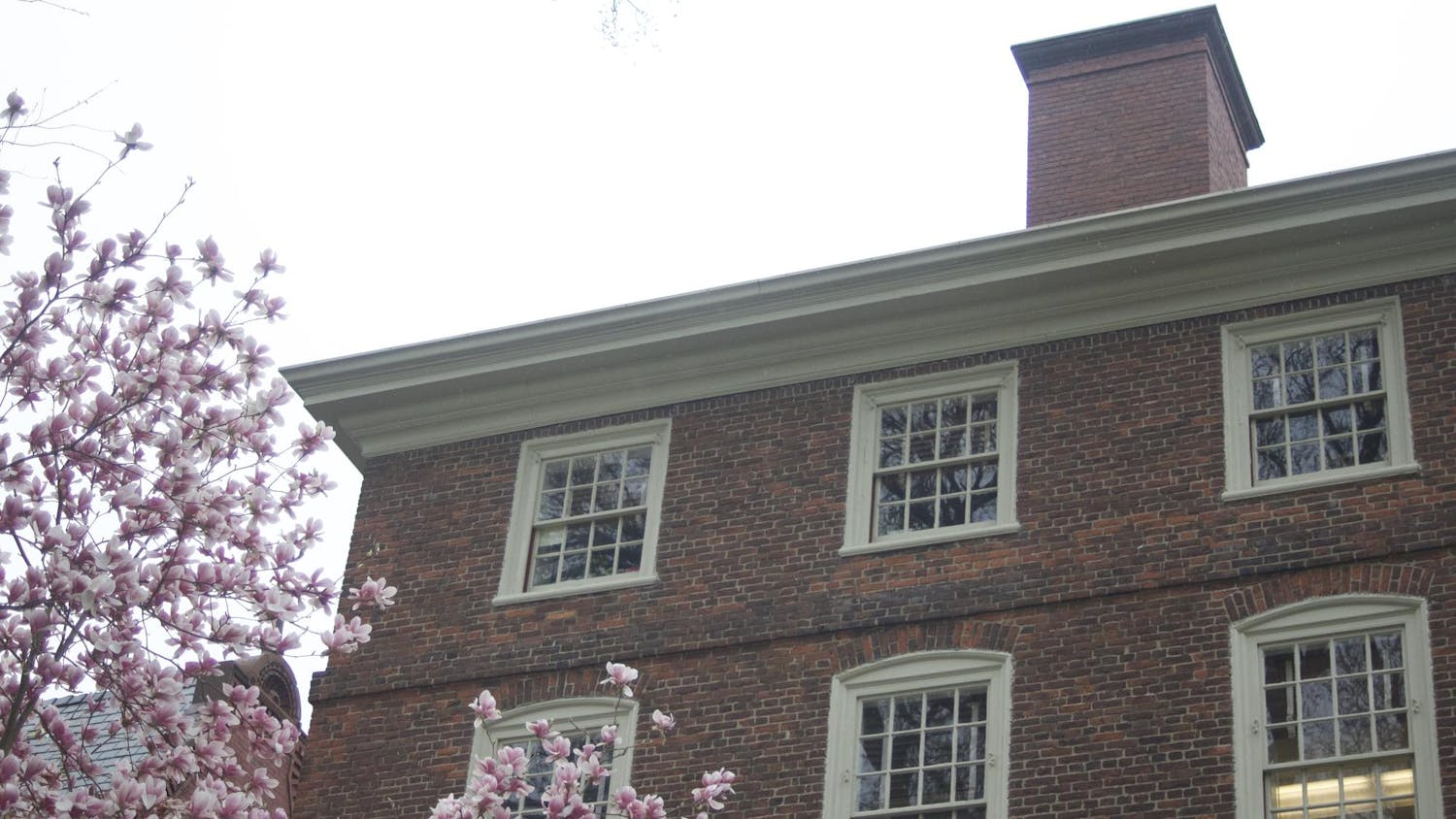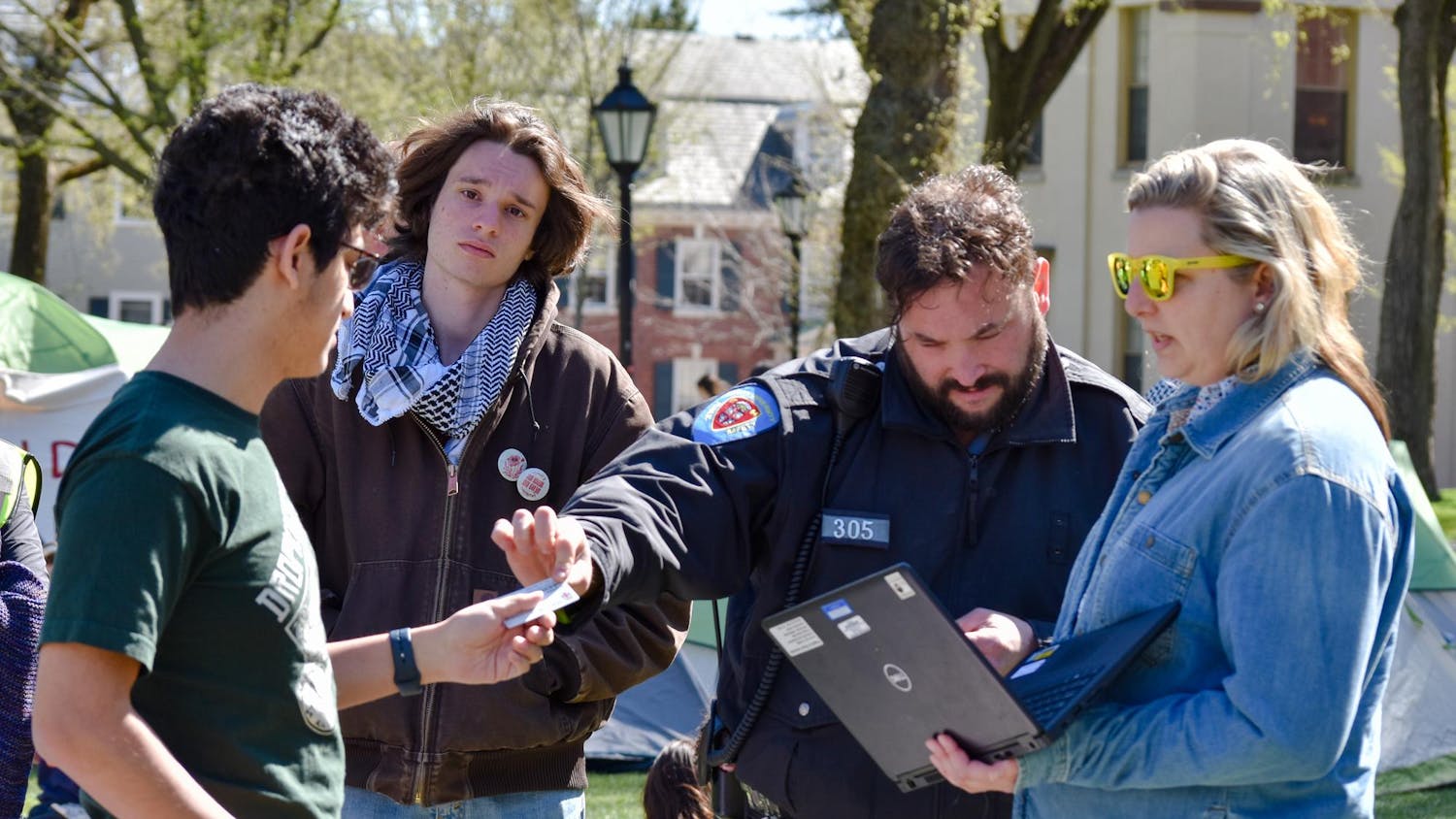Fiona Condon '12 was reading over a project handout for her computer science class. The prompt presented a hypothetical scenario, and while some students might have been amused, Condon found it "a little off-putting."
A woman is upset because she cannot figure out the answer to a problem and her boyfriend is not around to help her. The prompt instructs the student to help.
"I understood it was kind of a topical joke based around the themes of the course," Condon said. "But at the same time, having that trope be right in the project handout was a little irritating."
While she said these experiences are "absolutely not" the norm in the Department of Computer Science, the stereotype of women struggling with computers is culturally ubiquitous.
Nationwide, the number of women in computer science is one of the lowest out of all science, technology, engineering and math fields. In 2009, only 11 percent of computer science bachelor's degree recipients were women, according to a survey by the Computing Research Association.
Departmental efforts
Statistics for Brown reflect national trends. Roughly 15 percent of CS concentrators are female, said Tom Doeppner, director of undergraduate affairs in computer science. He added he has seen that figure climb as high as 25 percent in the past.
The department tries to make sure introductory courses have female teaching assistants and analyzes which types of assignments are most intimidating to women.
The Admission Office is "quite aware" that the department wants more women who express an interest in CS, Doeppner said, though he said he was unsure if expressing an interest would actually increase a female applicant's odds at admission. Admissions officials did not respond to multiple requests for comment.
The CS department also offers three introductory sequences, partially in hopes of attracting women. But offering many options likely has not affected the University's numbers, Doeppner said. He said he doubts introductory courses "are scaring women off any more than they're scaring men off."
"The problem is not that women get disenchanted with CS when they get here — it's that they aren't coming here interested in computer science," he said. "The perspective that people are getting is that a bunch of male hackers get together and just code all the time, which isn't really computer science."
Like Brown, Yale is "pretty reflective of the national trends," said Dana Angluin, a professor of computer science there. Of the 20 computer science majors who graduated from Yale last year, only four were female. The department considers attracting women "a fairly strong priority," Angluin said.
In recent years, Yale has staffed its introductory computer science course with female faculty to encourage its female undergraduates, she said, although the department does not tailor the curriculum toward women specifically. The university also has a student group for women to "work on supporting each other in the major."
Some students may take a computer science course to help fulfill Yale's quantitative reasoning requirement, giving faculty a chance to convey the excitement of the field, Angluin added.
In the classroom
As a math-computer science double concentrator, Lu Zeng '12 said she would have to question her counting skills if she didn't notice the gender disparity in her CS classes. "But has it affected the experience of my education? Not at all," she said.
It's hard to definitively say why there are fewer women in the field, but female presence has historically been low, she said. "It's a little bit like wondering why there aren't more people from sub-Saharan Africa in the Winter Olympics," she said.
Condon — who plans to concentrate in American civilization and computer science — said she knew after her first course that she wanted to study CS. She enjoyed the feeling of accomplishment after overcoming challenges and developing competency in the languages of computing.
The case was similar for Zeng, who had not initially planned on concentrating in the field. "I could start from nothing (and go) to something like Tetris in a semester," Zeng said. "I liked the feeling of mastery that I got from a course like this."
But getting women to take their first class in the department can often be difficult, and Condon said she does not know how the department might be able to encourage women to do so. She said she did not feel that her classes so far had catered specifically to her gender, but that she would not want them to.
Still, there are signs the University is making an effort. Condon pointed to the Women in Computer Science group and the Artemis Project, a summer program run by undergraduates to introduce high school students to the field.
The network of undergraduate TAs and events held by Women in Computer Science and the departmental undergraduate group help to provide a "strength of community" in CS at Brown, Zeng said.
Women in Computer Science declined to comment for this story. "The issue of women being underrepresented in the sciences is deeply complicated, and I am concerned that simplifying it to fit within the space constraints of a newspaper article will result in misunderstandings," wrote Ashley Tuccero '11, a coordinator for the group, in an e-mail to The Herald.
A decline over time
The proportion of females in computer science peaked during the early 1980s. But by the end of the decade, women were dropping out of the field.
Computers were gradually becoming "a boy thing," said Harvey Mudd College President Maria Klawe. When computers were emerging in the early 1970s, most typists were women, and so computer science seemed like a job for women. But the computer games that arrived in the 1980s changed that perception, since most of them involved sports or simulated violence.
The games were "very easy to program — a piece of light going across the screen and being able to figure out whether it hit the target or not," Klawe said, adding that it was natural for game development to subsequently be "very focused on boy interests."
The number of students interested in computer science increased significantly at the end of the 1990s, according to the New York Times. Since then, rates have steadily declined.
As computer use spread to other disciplines, "people discovered you don't have to do computer science to do computers," Doeppner said.
Most universities try to attract more women to the discipline, said Shriram Krishnamurthi, associate professor of computer science at Brown. But "I don't know what the right baseline is. Is it parity? Is 50-50 the right number? Should it be 70-30 in one direction, maybe 70-30 in the other?" he said. "What's more useful is to find the root causes. … Percentages just mean nothing to me."
Raising the numbers
At Harvey Mudd, the number of female computer science students has gone up significantly in recent years, the proportion of females increasing from 10 percent to 42 percent, according to Klawe.
The department offers a number of summer research opportunities to female rising sophomores. It also restructured its introductory computer science class, which all students take in their first three semesters. The focus of the class switched from Java programming to computer-based problem solving, resulting in a remarkable increase in popularity, Klawe said.
Harvey Mudd also started inviting its female freshmen to a computer science conference where approximately 95 percent of the attendees are women, Klawe said. Even students who do not end up majoring in the field leave with a changed perception of it. "It's like, ‘Oh yeah, there are tons of women in CS! I met a thousand of them,'" Klawe said.
She said she believes Harvey Mudd's success can be replicated at other schools, si
nce the changes were not expensive. As an undergraduate, she was told many times that there were "no good women mathematicians," even though she was one of the best at every school she attended.
Zeng, however, said that the open curriculum might make Harvey Mudd's approach difficult to implement at Brown. The student body of an engineering school is "very self-selecting," she added.
Broadening focus
While Krishnamurthi said he supports the University's departmental efforts, he takes a wider view of the situation. "I don't understand why women should be more important than say, African Americans or Hispanics or the poor," he said. "I don't want to be picking and choosing and saying, ‘That's the most important criterion.' For me, they're all students."
Krishnamurthi, who taught an introductory CS course last fall, said he believes the larger problem is a misunderstanding of what computer science is. He said the problem is largely fueled by high school programs. The Advanced Placement computer science curriculum taught in many high schools has "tons of contradictions" in its design, he said. Many universities, including Brown, do not offer credit for AP computer science. Krishnamurthi said this should be an indication that additional reform is needed.
To combat the problem, Krishnamurthi has spent the past 15 years running two outreach programs to introduce high school and middle school students to computer science. While he does hope to alleviate misconceptions about computer science, Krishnamurthi says his goal is broader and that ultimately, he hopes to improve students' math skills and encourage them to get into science, technology, engineering and mathematics.




